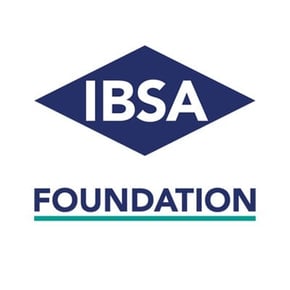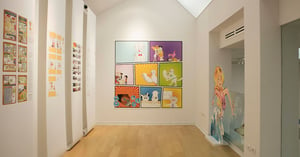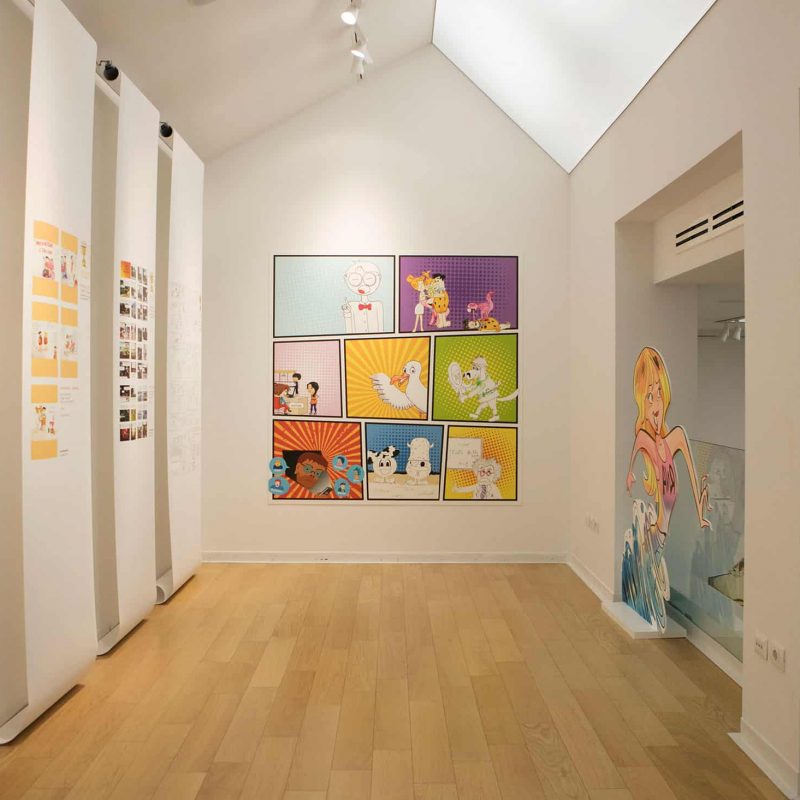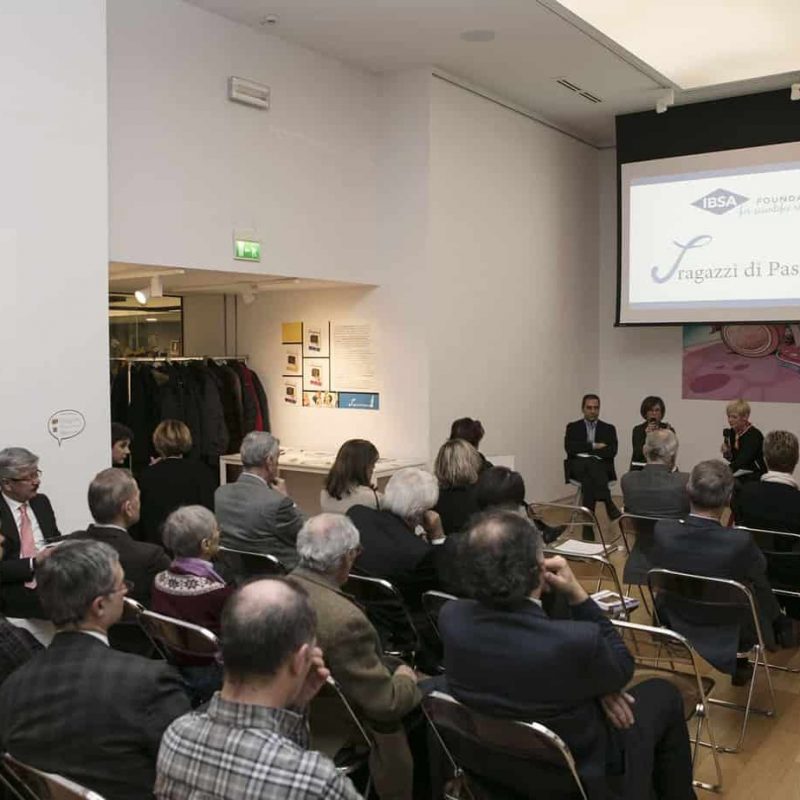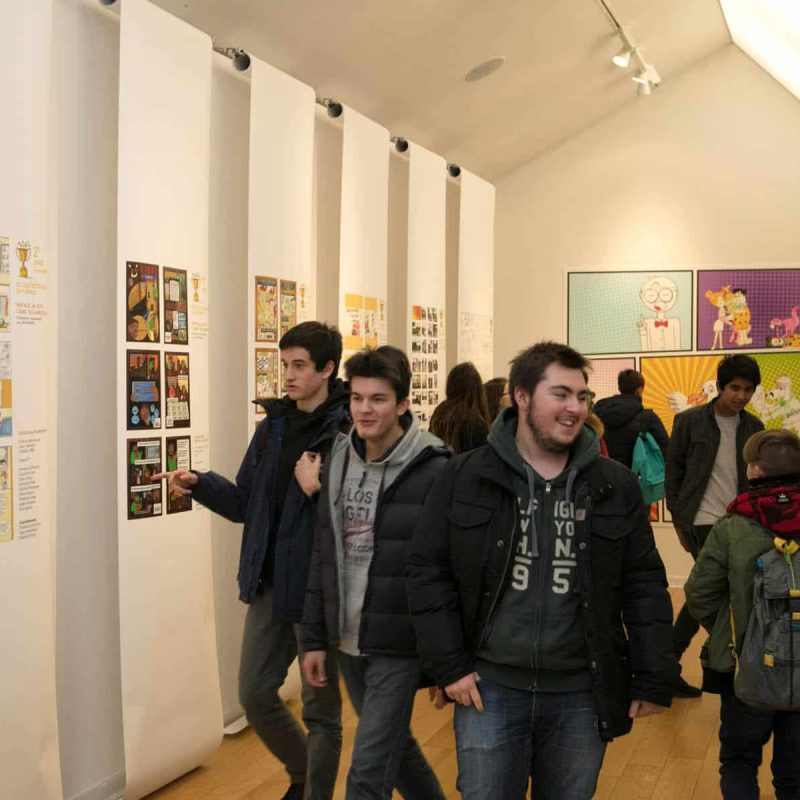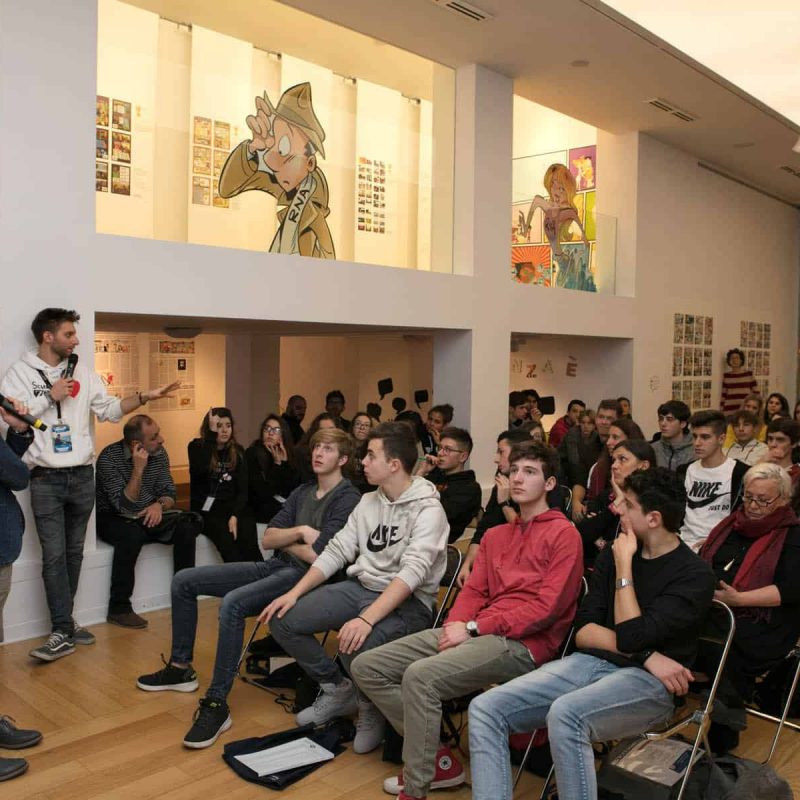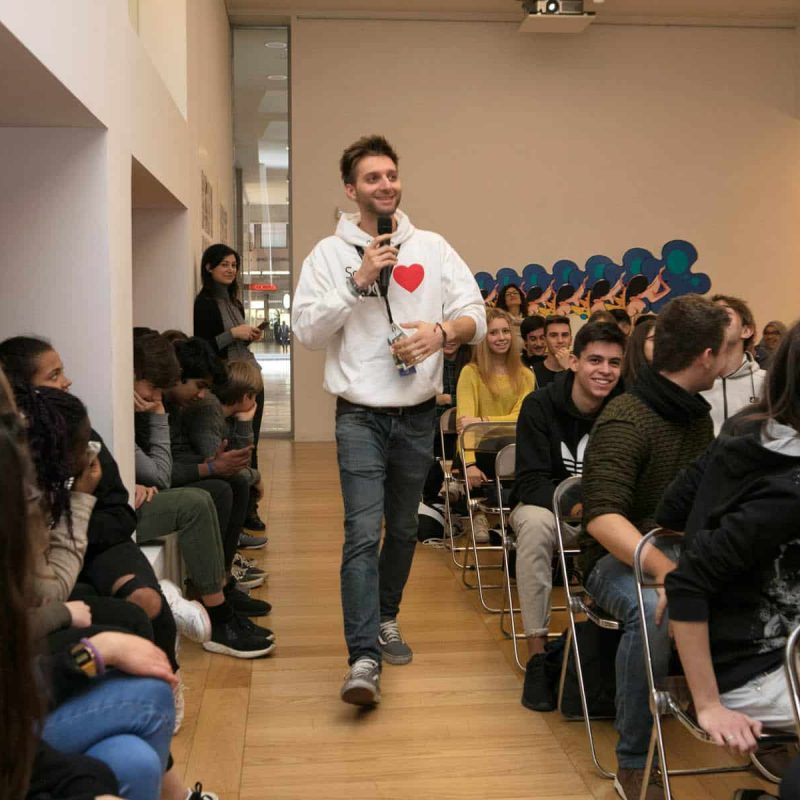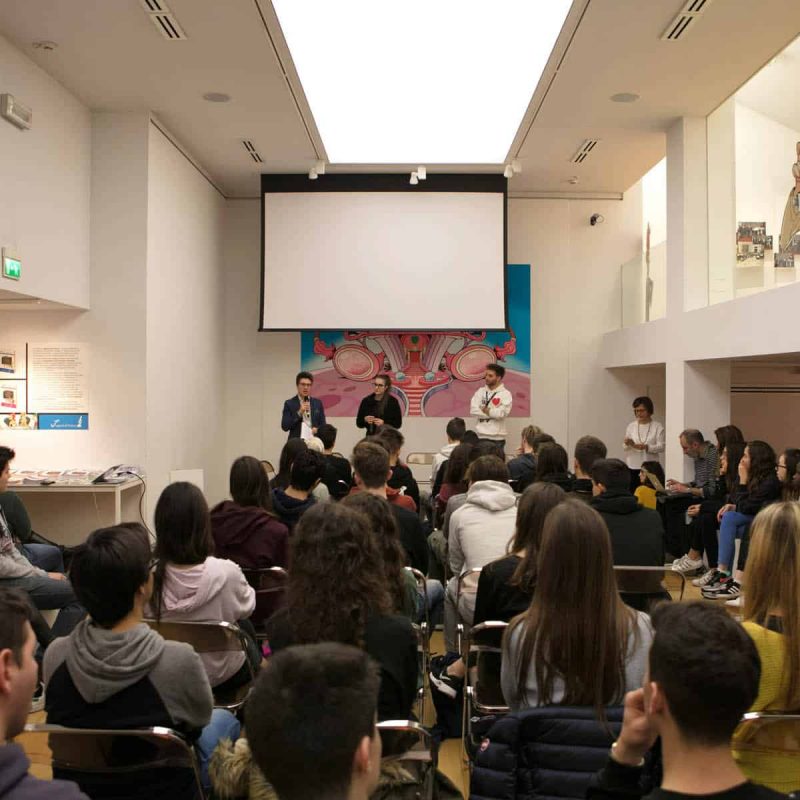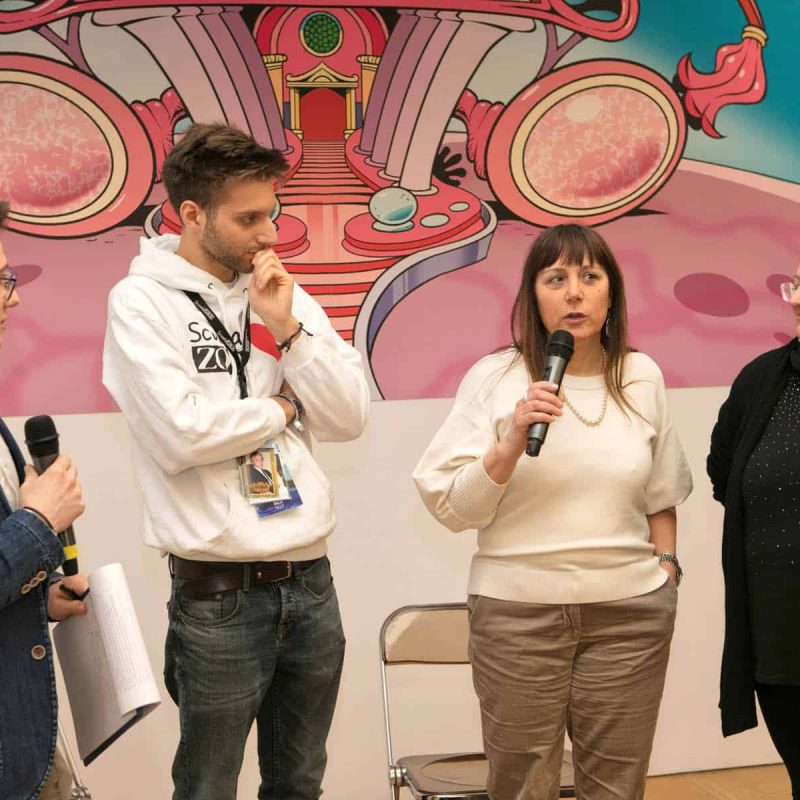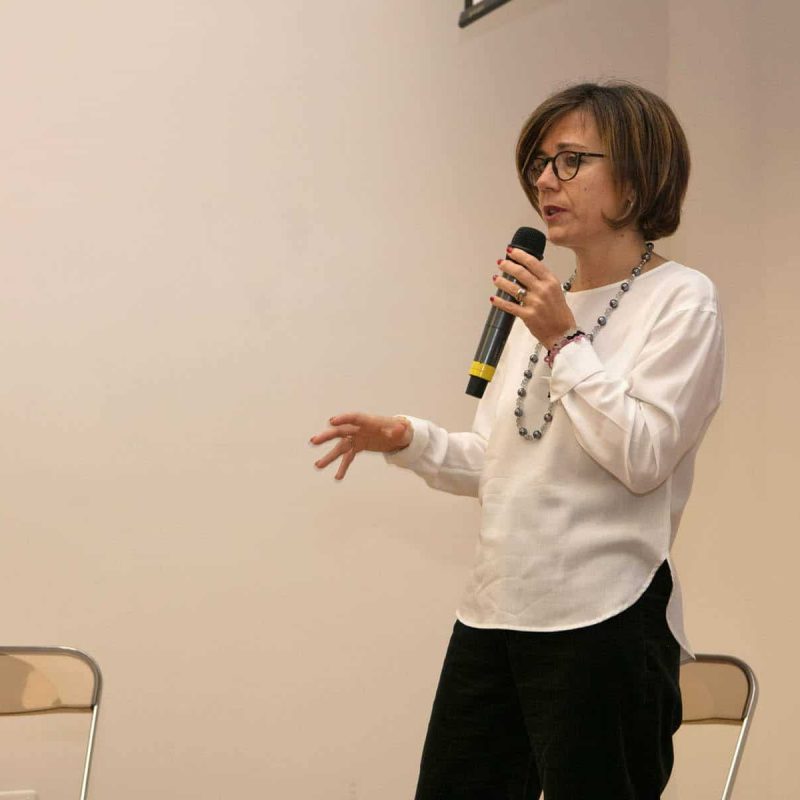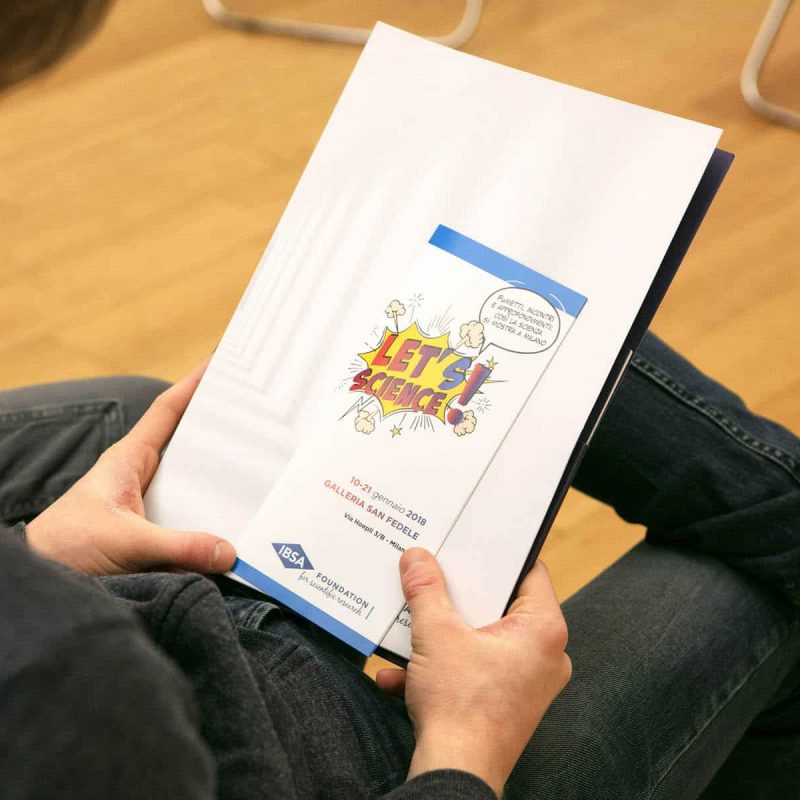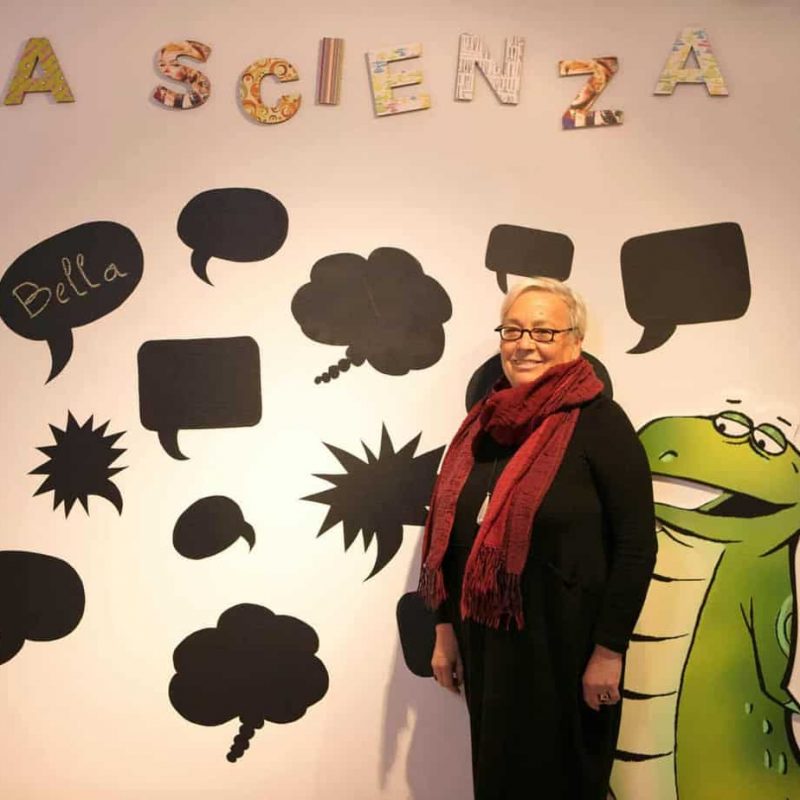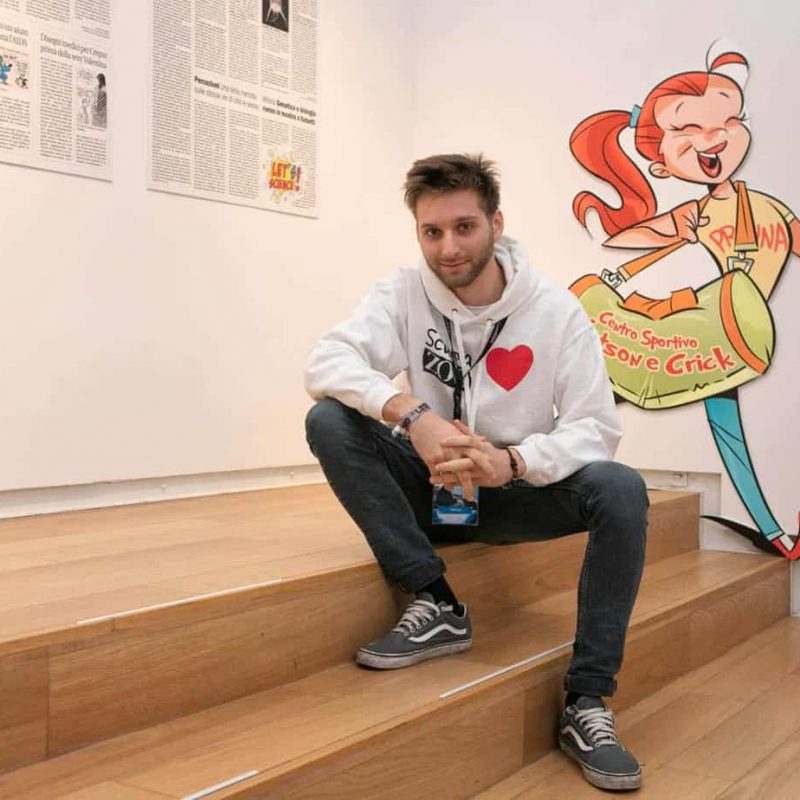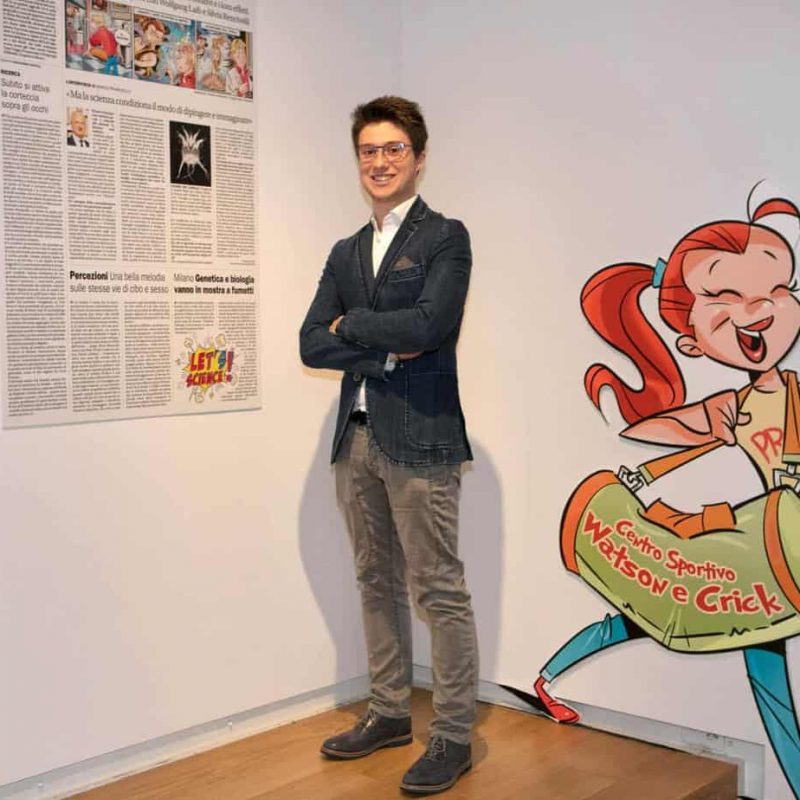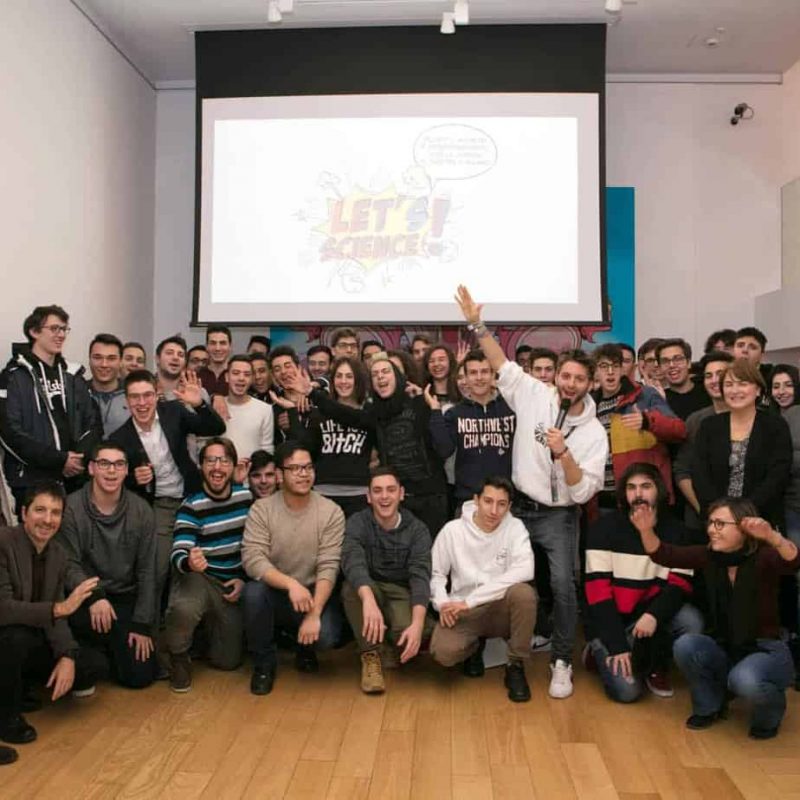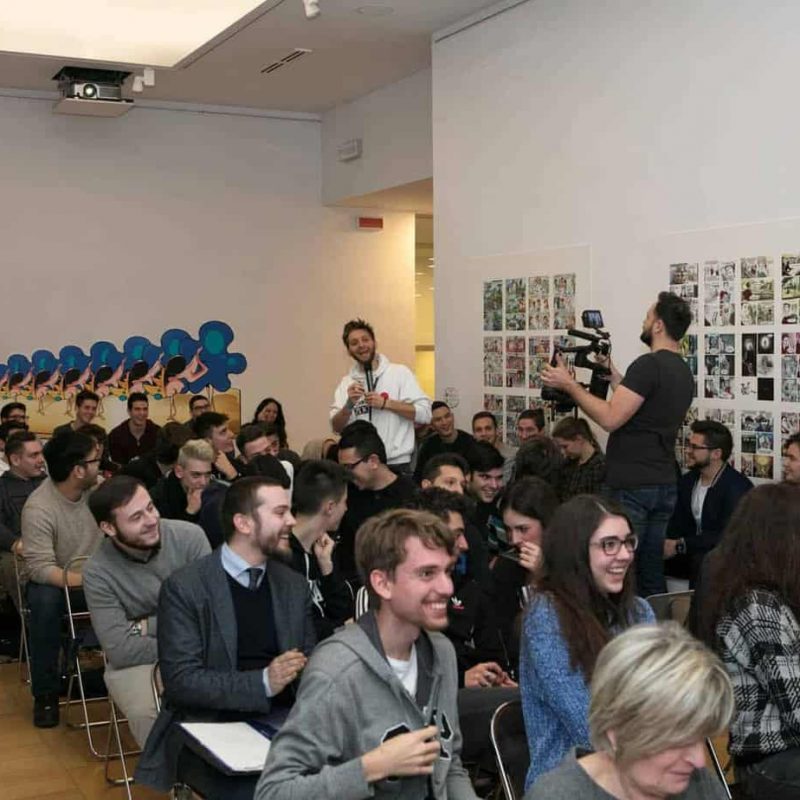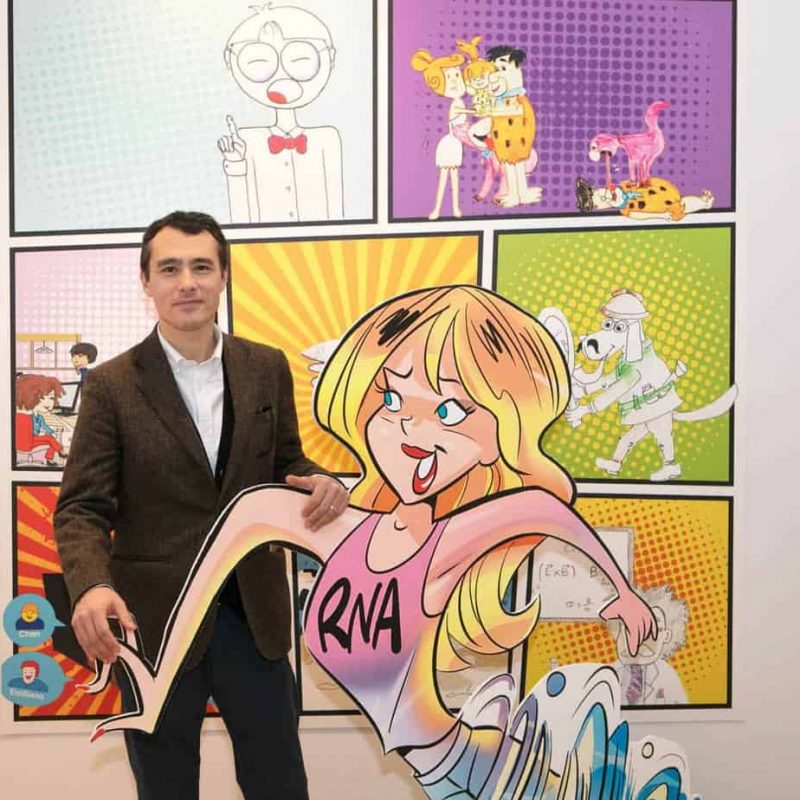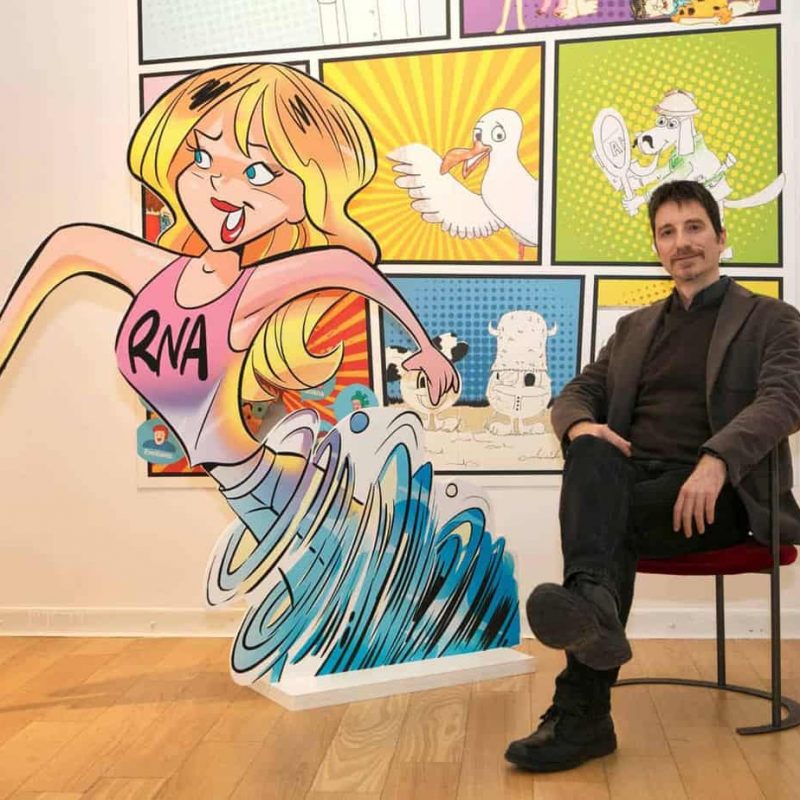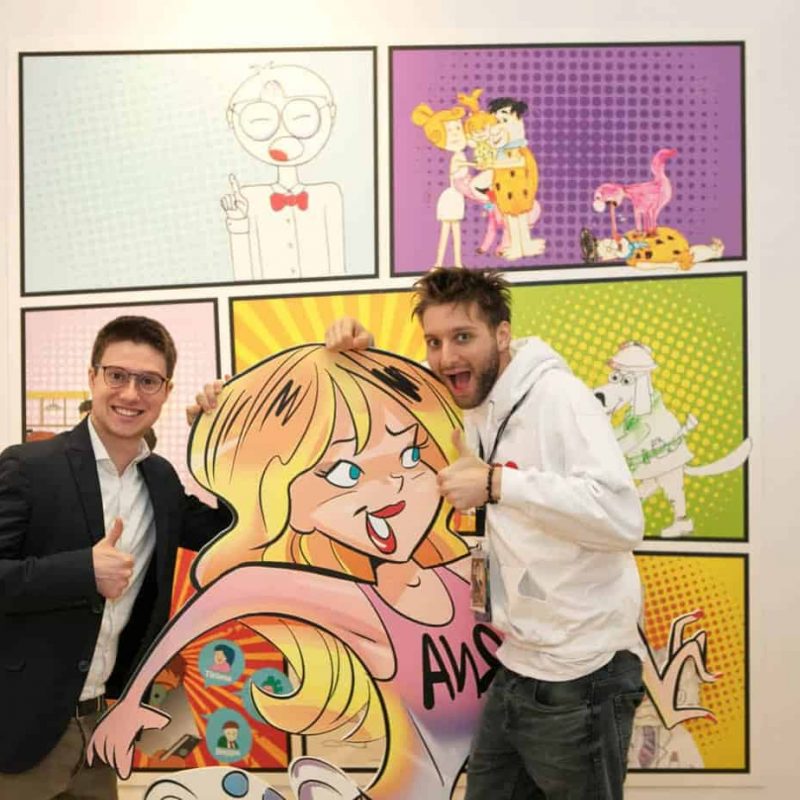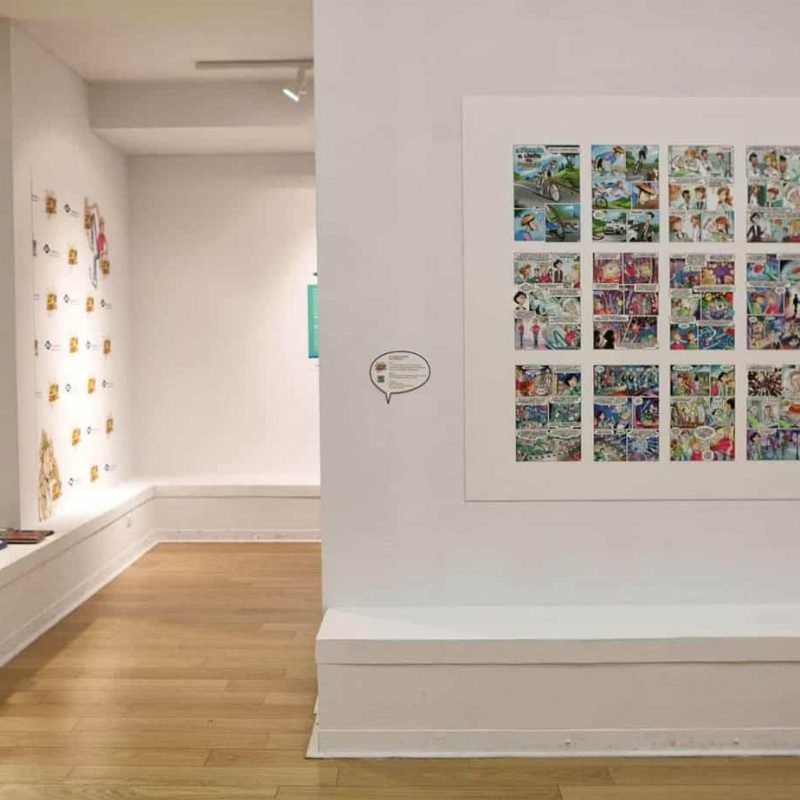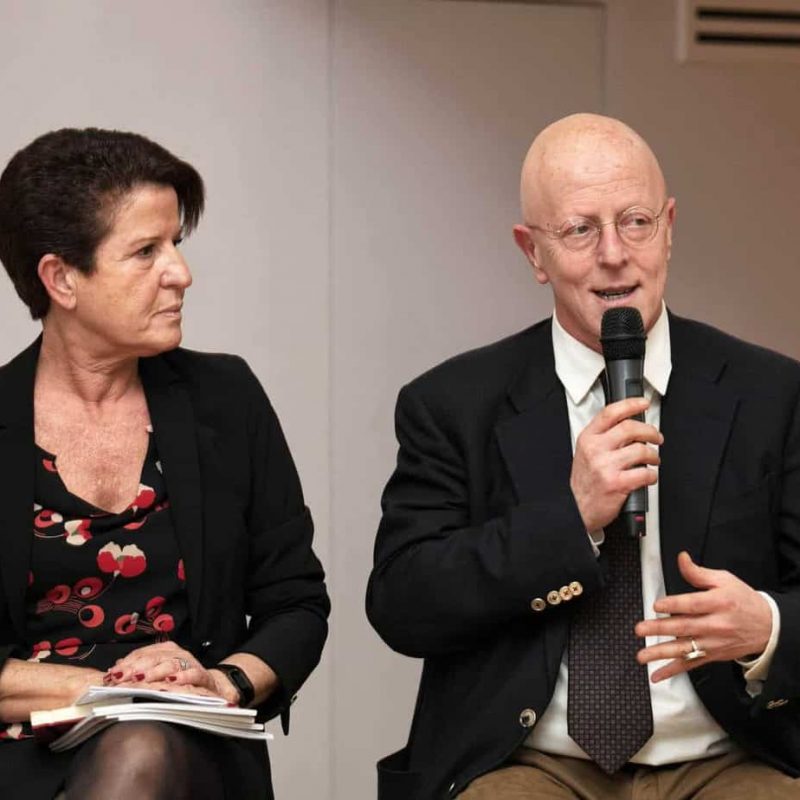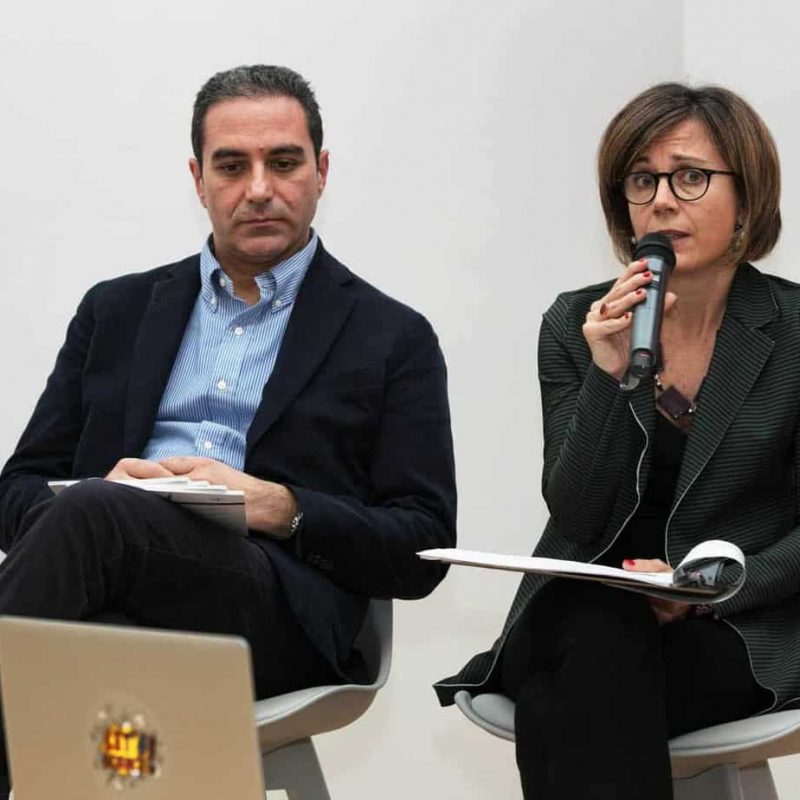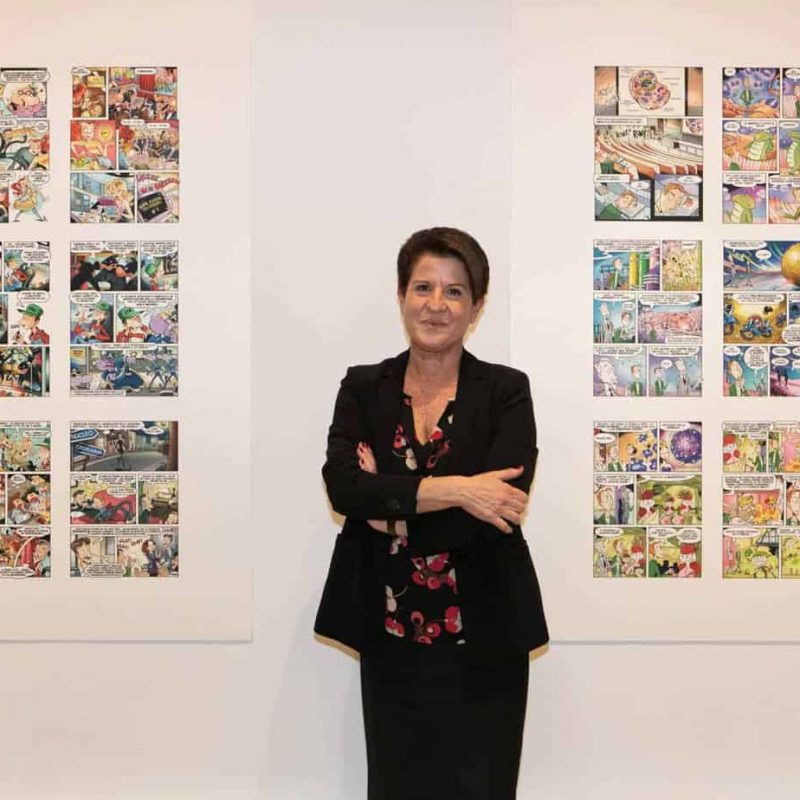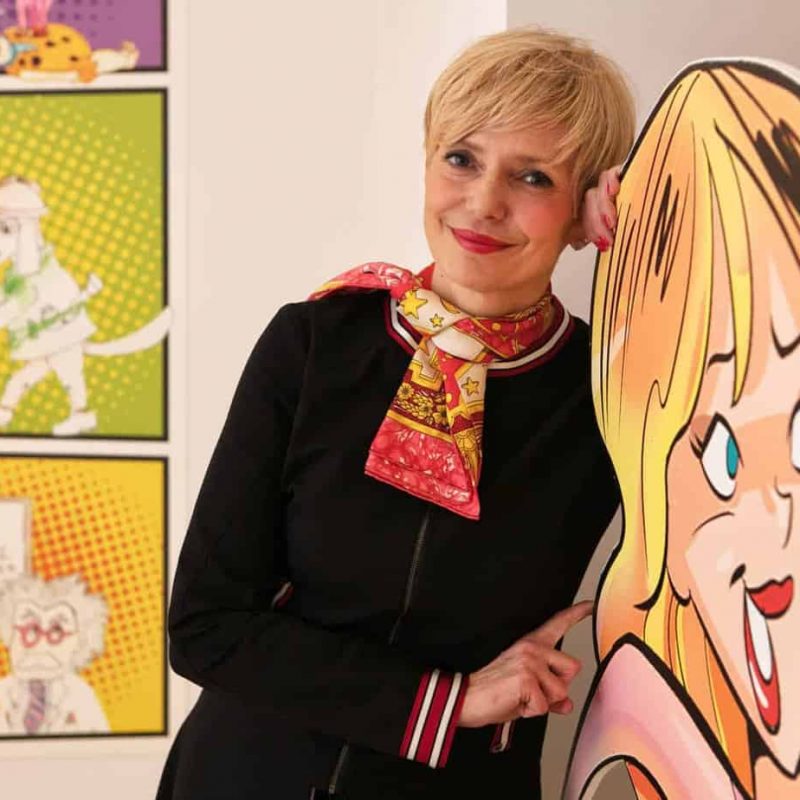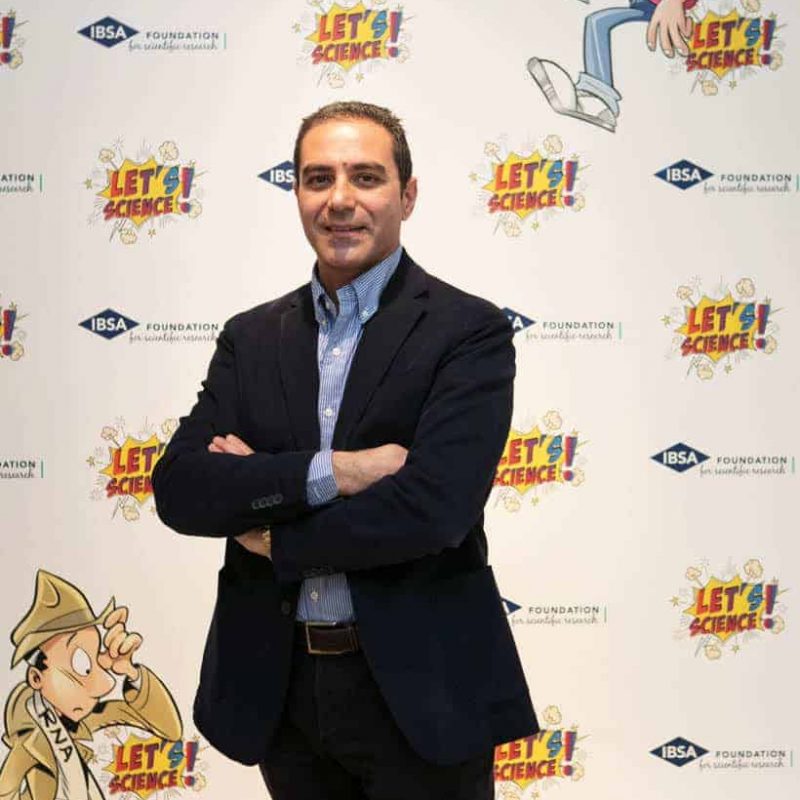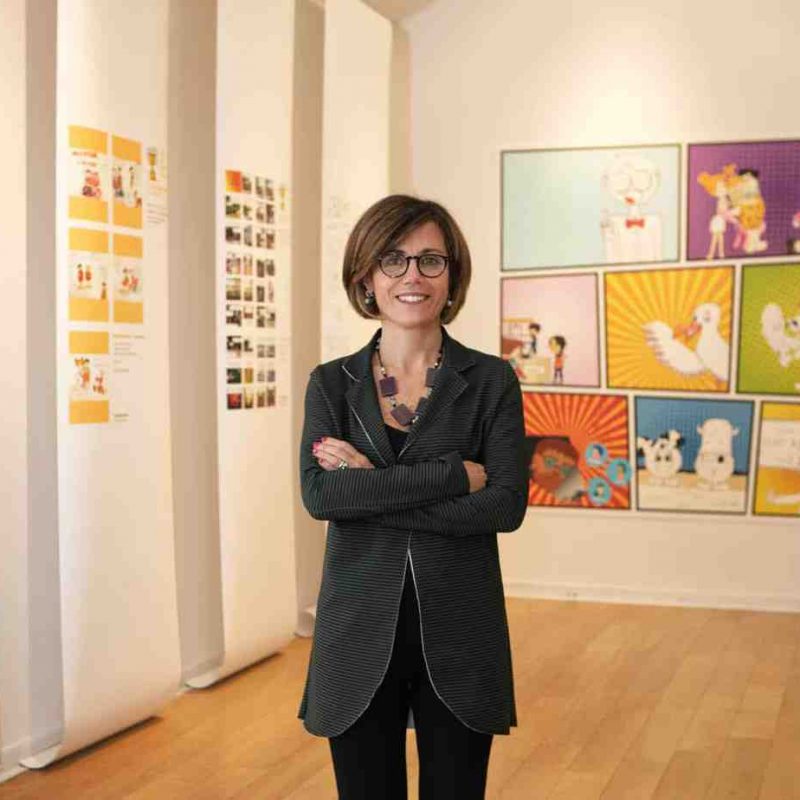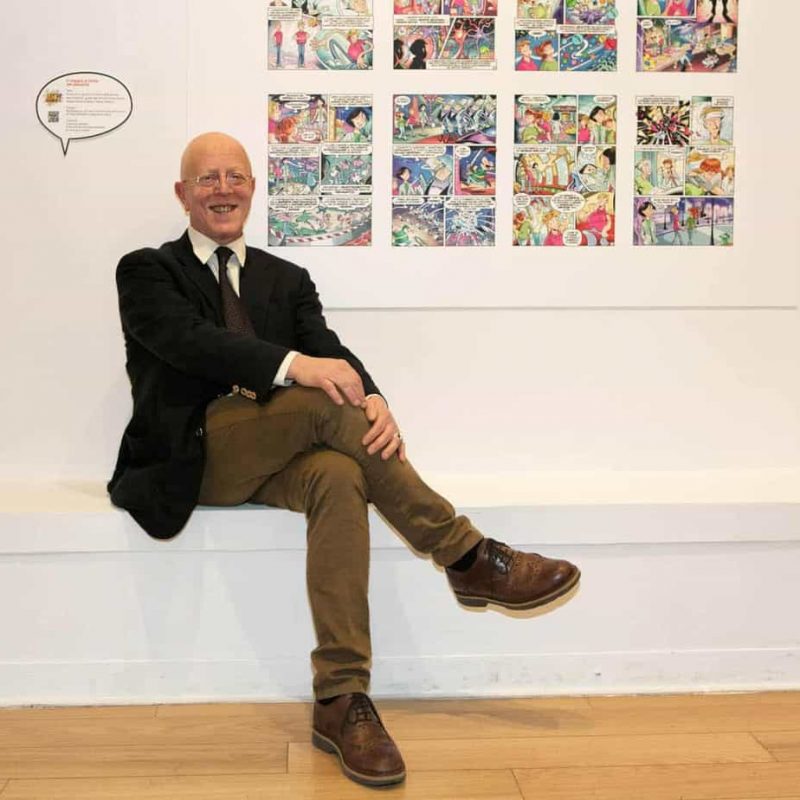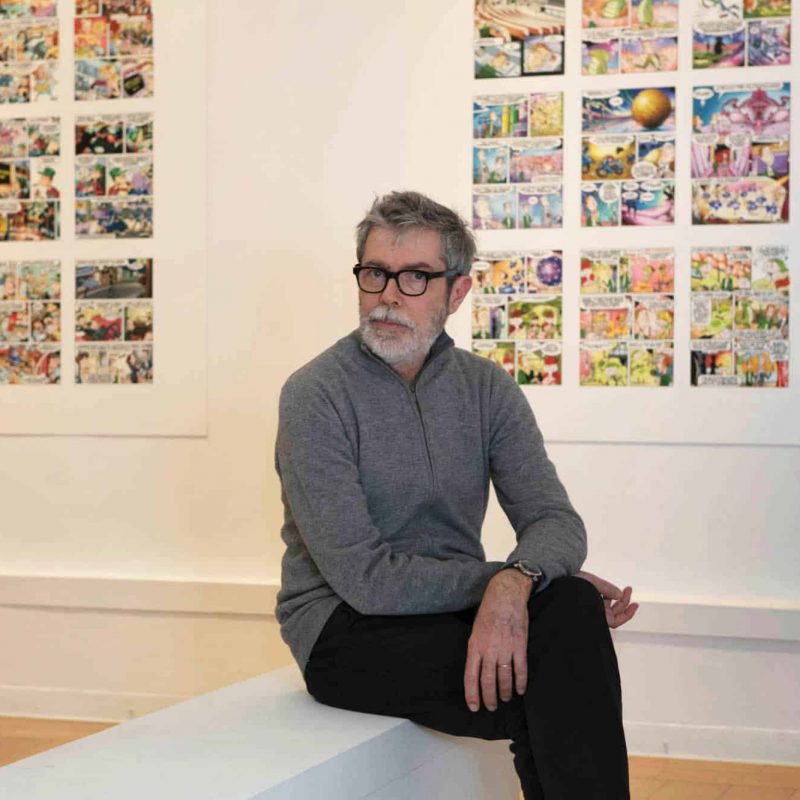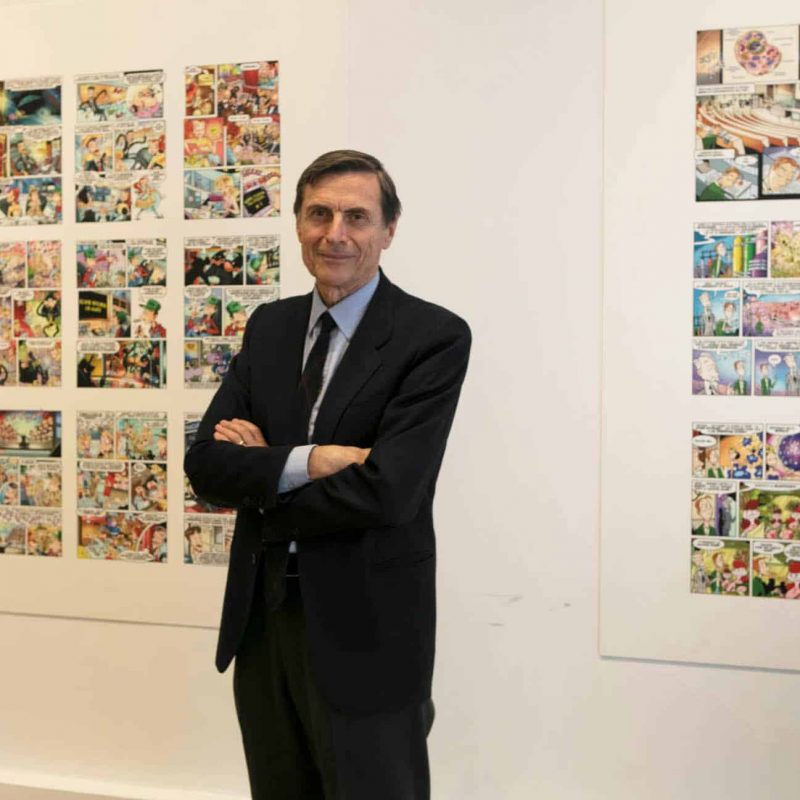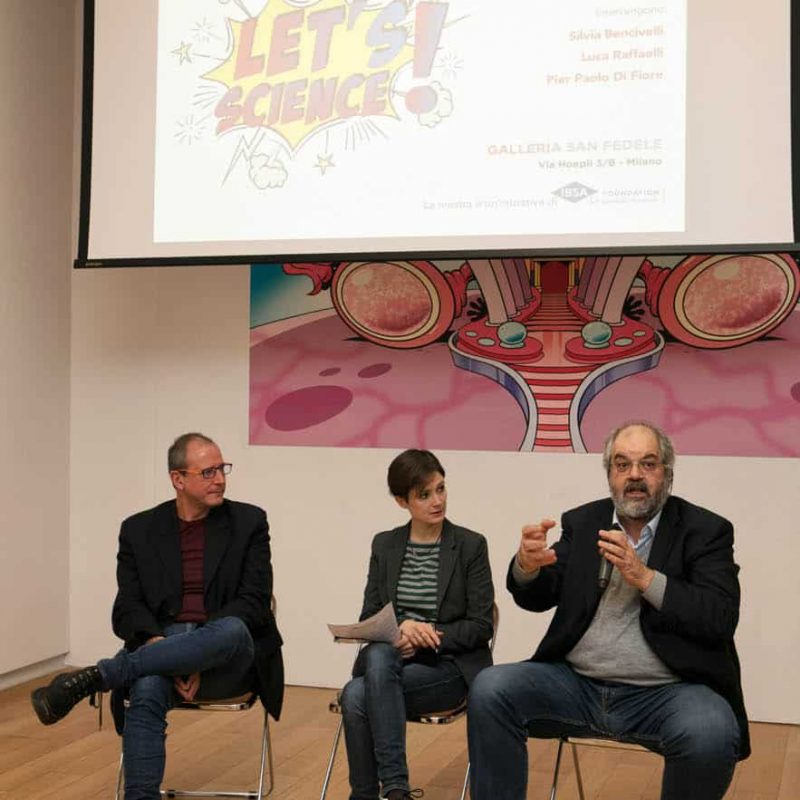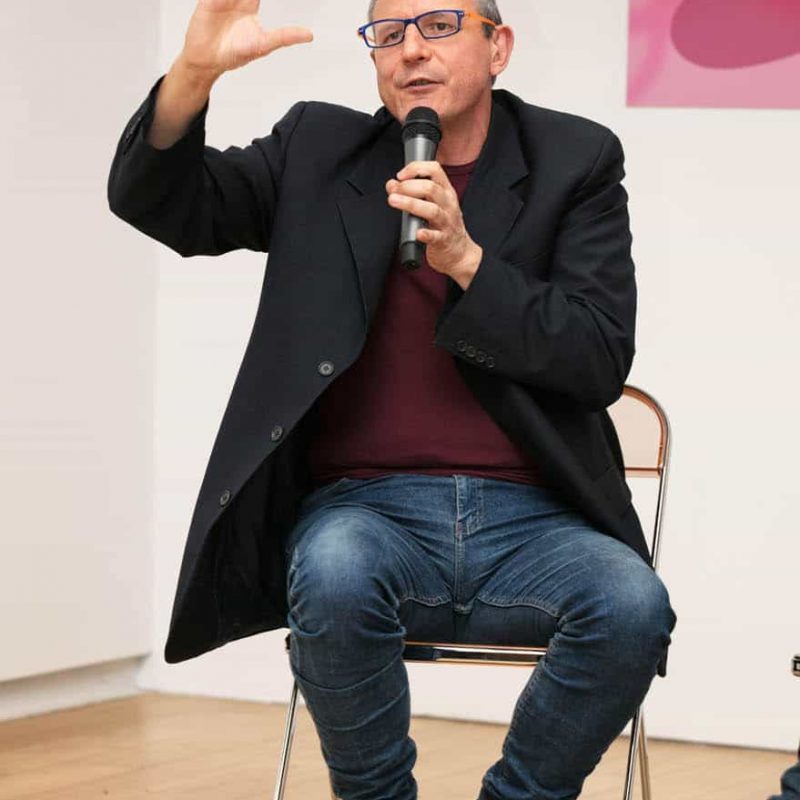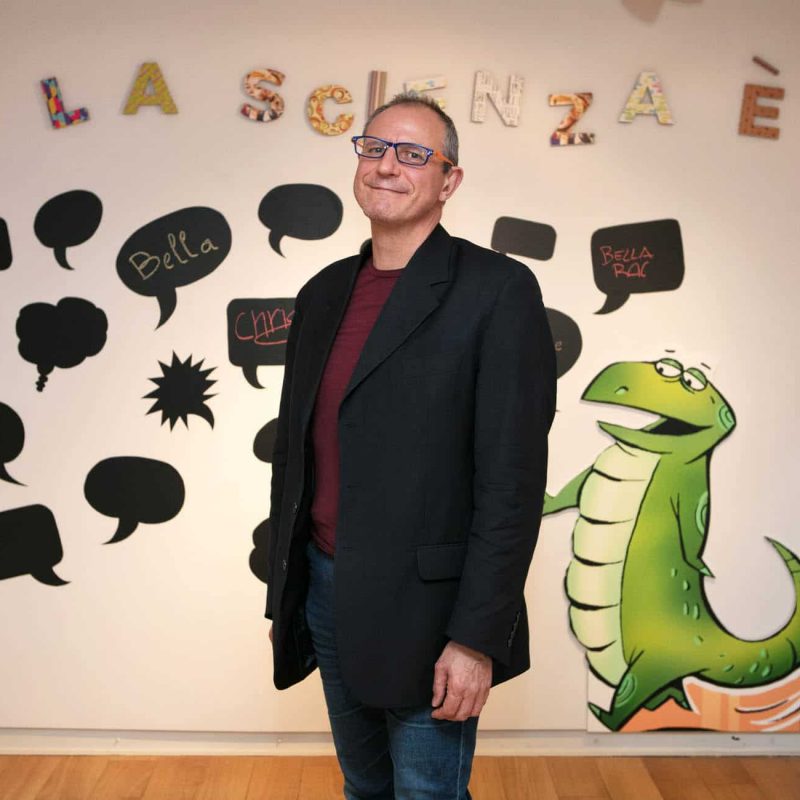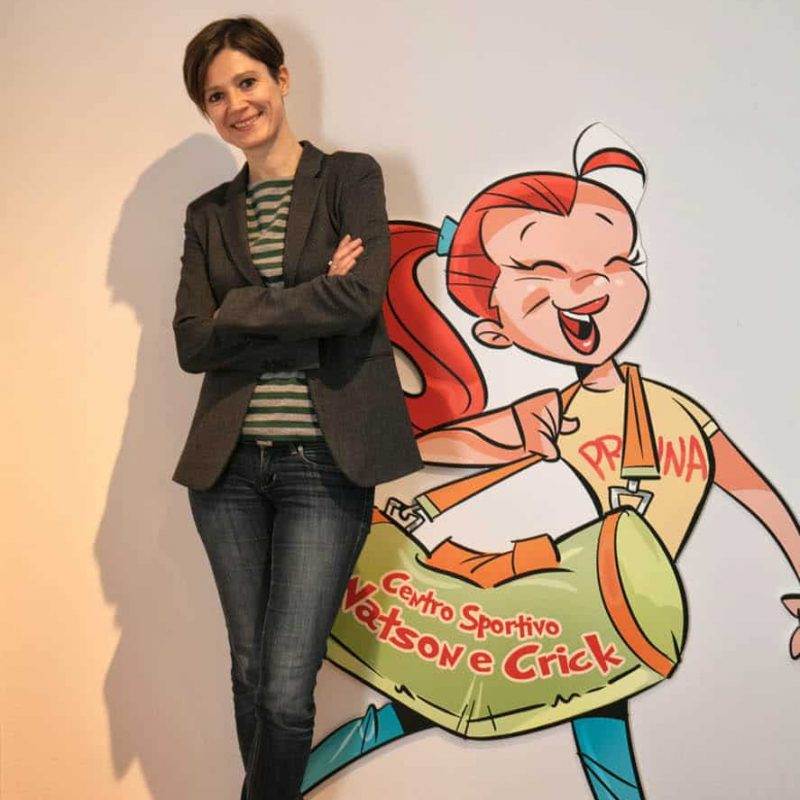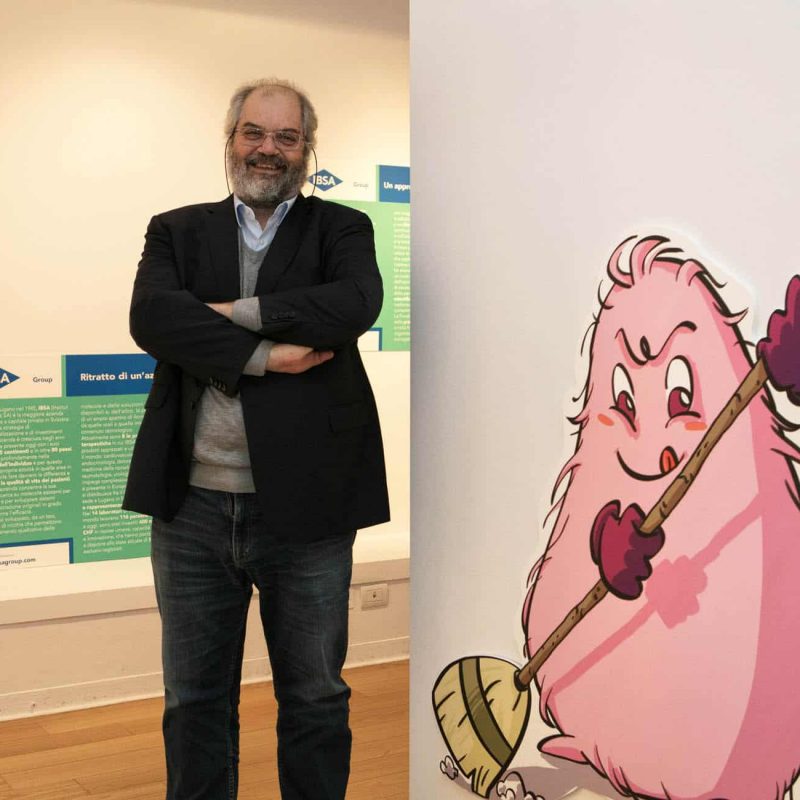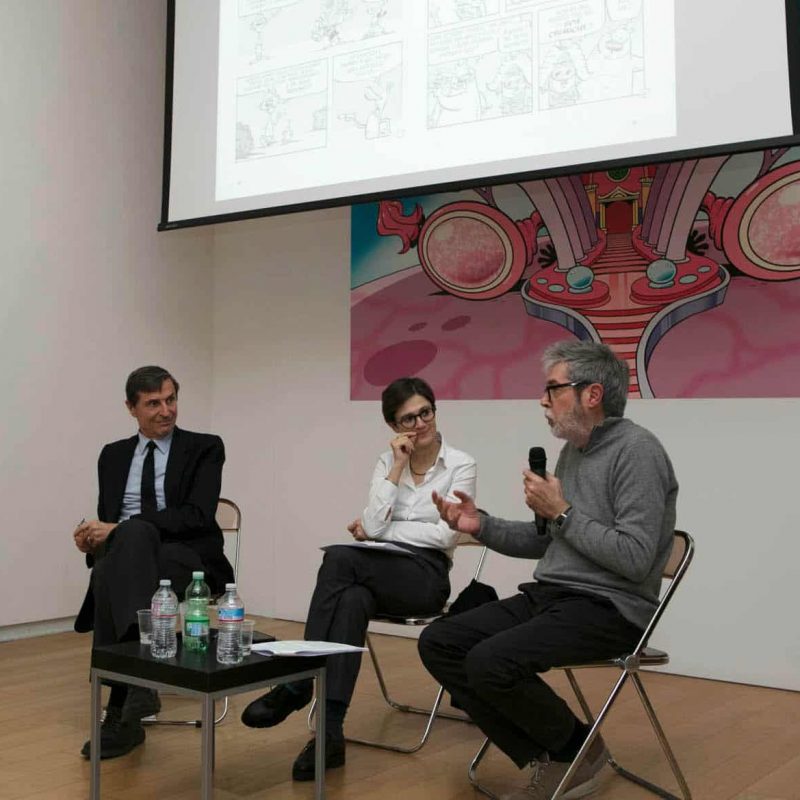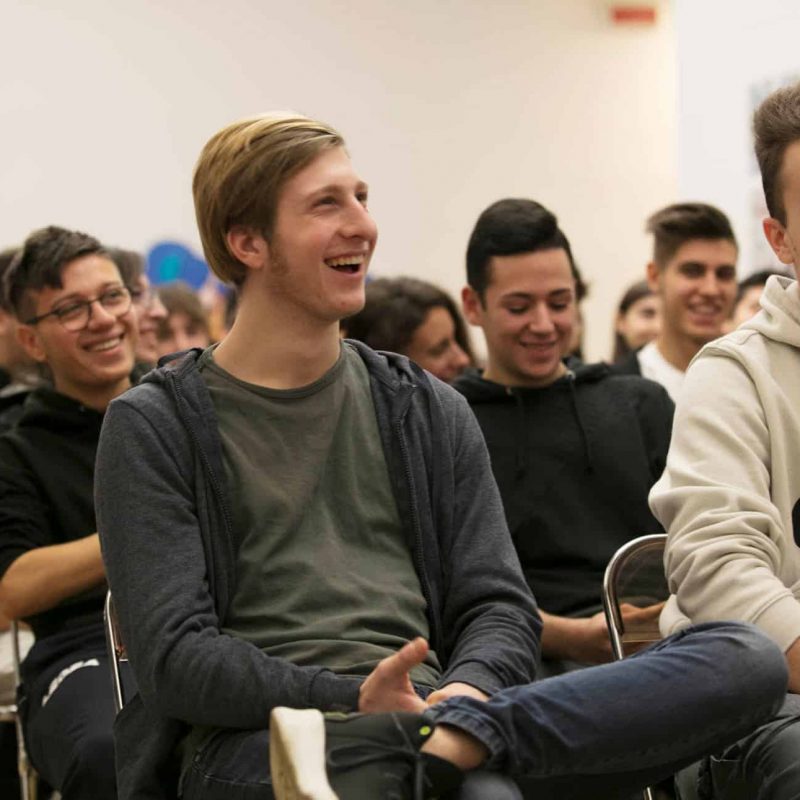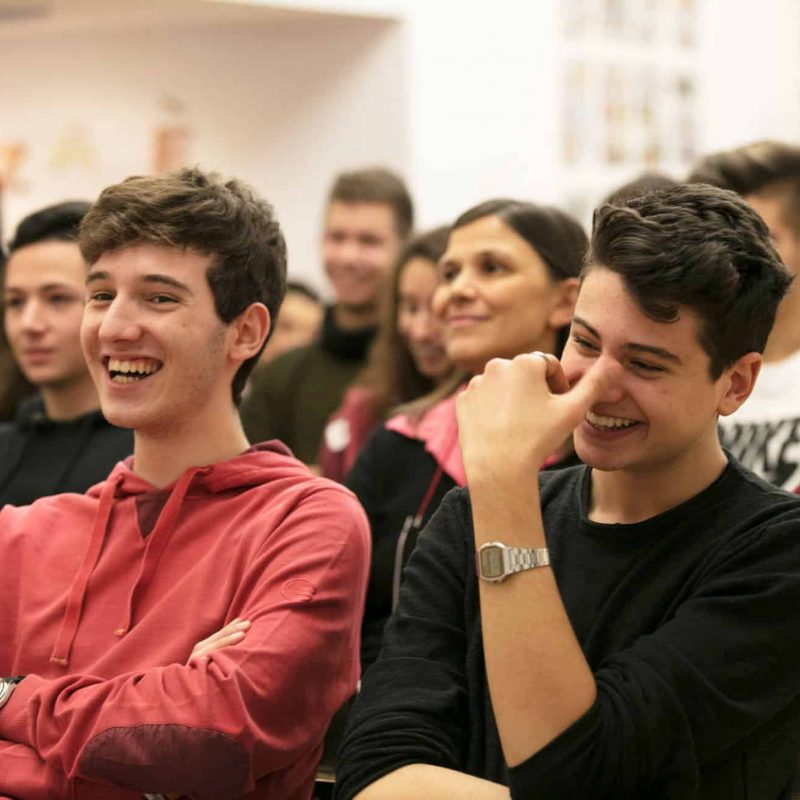On January 10th, Let’s Science! was inaugurated in Milan. This creative project was created by the IBSA Foundation and designed to converse with the city, institutions and the media on the great topic of fake news, as well as to stimulate and make children think about how to protect themselves from scientific and medical fake news on the internet that can be very dangerous for our health.
Let’s Science! was also characterized by in-depth meetings and workshops, in which the Foundation called influencers, representatives of the academic world and especially students, who expressed their way of seeing science and correct scientific information through their creativity.
During the two weeks of events, at the Galleria San Fedele, the winning cartoons of the competition “Bufale in rete (“Fake news on the web”) how to recognize them” and the comic strips that characterize the series of books “I Ragazzi di Pasteur” (“The Pasteur Kids”) were exhibited.
The speakers
Silvia Misiti, Director of the IBSA Foundation
Silvia Bencivelli, scientific journalist and TV host
Pier Paolo di Fiore, Professor of General Pathology at the University of Milan
Gianluca Dotti, journalist and scientific blogger, who will converse with Scuolazoo
Alberto Mantovani, Professor at Humanitas University and Scientific Director of Humanitas IRCCS
Antonio Musarò, Professor at La Sapienza University of Rome and Coordinator of the scientific communication activities of the Pasteur Institute – Italy
Luca Raffaelli, journalist and screenwriter, comic book and animation expert
Stefano Santarelli, founder of the Scuola Romana dei Fumetti
Guido Silvestri (aka Silver), cartoonist and author of Lupo Alberto
Rita Tancredi, Director of Carocci Publishing House
Cristina Limatola, Professor of Physiology at La Sapienza University of Rome
Andrea Grignolio, Professor of History of Medicine at La Sapienza University of Rome
Angela Santoni, Professor of Molecular Medicine at La Sapienza University of Rome
WHAT OUR EXPERTS SAID DURING THE LET’S SCIENCE! EVENTS
During Let’s Science! hundreds of children and adults listened to the influential guests that participated in this initiative and debated important issues such as the close collaboration between science and comics, scientific education as an antidote to fake news and the importance of correct scientific information, especially for young people.
WORKSHOP January 12, 2018: Let’s Science! Scientific fake news from the perspective of young people
During the first Let’s Science! creative workshop, the real central characters were the students of the 1st level secondary schools, who participated in the “Bufale in rete” (“Fake news on the web”) competition. They met their teachers, the scientific journalist Gianluca Dotti and the staff of ScuolaZoo – the media brand of Italian students – leading a lively debate on the importance of scientific education as an antidote to fake news.
During the meeting the youngsters were given several important tips on how to avoid sharing fake news, thus avoiding damaging their own health and also their digital reputation. In particular:
1) Sharing content on any social network remains forever.
2) If you support fake news with a like, you help to spread false news, compromising your reputation.
3) The number of shares and likes a news item has obtained, is not a reliable parameter for assessing its reliability.
4) Highly emotional contents are very often false. All aspects, both emotional and rational, of scientific information must be balanced.
5) Checking the page’s URL. Fake news is often shared by unknown sites or with names that deliberately sound like famous newspapers.
6) Science is not a system of absolute truth: there can be controversial issues, especially in “frontier science”. If you run into statements that are too peremptory and undocumented, chances are they are not very reliable.
WORKSHOP January 13, 2018: Let’s Science! Education thought comics
In the second meeting Silvia Bencivelli, scientific journalist,essayist, radio and television host take to the stage to moderate a lively debate among experts to investigate new languages and new forms of scientific education. The key figures in this discussion were Pier Paolo Di Fiore, professor of General Pathology at the University of Milan, and Luca Raffaelli, journalist, screenwriter and comic book expert.
Therefore, the fight against fake news consists of two essential elements: scientific dissemination and creative language, such as comics.
Luca Raffaelli spoke of the characteristics that a comic book must have in order to be an effective dissemination tool: a story that is correct from the point of view of its contents but at the same time compelling and develops through the story of characters that bring it to life. It is not simply a matter of inserting images with captions, but of giving life to a balanced story, where the drawing adds something more to the text and vice versa. In short, images and text must in turn converse with one another.
Professor Di Fiore recalled how scientists ought to visit schools and talk about science in order to excite kids through stories that convey complex topics in a simple way. This is exactly what the Foundation aims to do through the volumes of the I Ragazzi di Pasteur (“The Pasteur kids”) series, where stem cells are represented as elegant dancers called the “powerful ladies”. Moreover Di Fiore wanted to break a common understanding. The Professor indeed emphasized that the first task of scientific research is not to discover useful things, but to make man more worthy, in short, to ennoble him.
WORKSHOP January 18, 2018: Let’s Science! A conversation between science and comics
For the third appointment of Let’s Science! with the public, the scientific journalist Silvia Bencivelli returned to the stage to speak with the cartoonist Silver and Professor Alberto Mantovani.
Silvia Bencivelli explained the difficulties encountered in disseminating information in a serious manner, especially online. The first is that science is a difficult subject to explain quickly. This feature clashes with the use of the web, where the reader only captures the main elements of a piece of news, and therefore it requires animmediate message that can be summarized. Then there is the phenomenon of fake news, which in fact is as old as the world, only that the internet has worsened this trend for due to some of its specific features: the network offers an endless range of information, equates those who are experienced with those who are not, and gives strength to very small groups that tend to become highly aggressive.
Guido Silvestri, aka Silver, the famous creator of Lupo Alberto, one of the characters most loved by the audience, starting from his personal experience, spoke of the winning combination between comic and scientific dissemination. Very often, in fact, demanding topics of a medical-scientific nature need a key of communication that has to be able to get out of the logic of the illustrated textbook in order to capture the attention of its audience. The character of Lupo Alberto, who over the years has become the voice of important educational campaigns aimed at young people on health issues, is an important example of how creativity and art can dialogue with science, making it clear and understandable without ever trivializing it.
Alberto Mantovani, professor at Humanitas University and Scientific Director of the Humanitas Hospital, inspired by the invitation of the philosopher of science Karl Popper to “communicate in the simplest, honest and humble way possible”, highlighted the importance of an easily understandable language, especially when addressing scientific topics. The comic is well suited to this requirement, it is enough to think of Frances Balkwill, a prominent British scientist and one of the world’s leading authorities on the links between inflammation and cancer, who successfully creates and uses comics for scientific dissemination. Professor Mantovani also went through a brief history of vaccines, underlining how we all struggle to think in terms of risks and benefits. Hence the spread of false beliefs such as the connection between vaccines and autism or the mistaken belief that natural infection is good for the body.
WORKSHOP January 19, 2018: Let’s Science! Scientific fake news from the perspective of young people
In the second Let’s Science! creative workshop the central characters were the students of the 2nd level secondary schools, who participated in the Bufale in rete (“Fake news on the web”) competition. They met with their teachers, the scientific journalist Gianluca Dotti and the staff of ScuolaZoo – the media brand of Italian students – leading a lively discussion on the importance of knowing the dangers that lie behind the use of the web.
The use of internet and social media is now widespread among the very young, who are being increasingly exposed to the danger of false news, especially when science and health are concerned.
The scientific journalist, Gianluca Dotti, underlined how the web is an extraordinary tool that offers us a great deal of information. However, paradoxically, it can push us to close our minds rather than open them. The websites and social media record our browsing behavior and choose to mainly offer us the news that confirm our point of view. and the result? We risk living in a “filtering bubble” and mirroring ourselves in the information we want to hear. And this exposes us to the danger of taking fake news for good news.
It is therefore important to be open to different sources of information that can give the topic of interest an additional key to understanding, as well as contribute to forming an objective position on the topic in question, always remembering to verify its authoritativeness.
Andrea Grignolio, professor of the History of Medicine at the Sapienza University of Rome also contributed to the meeting with his talk on vaccines, a topic particularly debated in recent times, and pointed out that anti-vaccination came into being with vaccinations themselves. From the beginning of the nineteenth century to the 1990s the phenomenon involved a marginal fringe of the population that subsequently took on worrisome dimensions, especially on the internet: up to 2 years ago in Italy, Europe and the USA the websites opposed to vaccinations were more numerous than those in favor. And on social networks, 77% of the information was against vaccines. Things have now changed. There has been a big debate about what to do and today there are many more people in favor.
During the various events, several professors who worked alongside the young people in the creation of the first 4 volumes of “I Ragazzi di Pasteur” highlighted how comics can easily make complex scientific topics such as the functioning of the nervous system, the complex world of genetic regulation or the functioning of stem cells fun and entertaining.
Cristina Limatola, Professor of Physiology at Sapienza University of Rome, explained how in constructing a scientific comic strip together with middle school students, she tried to use a simple and basic language to explain the general functioning of our brain. Science was used as a starting point for building a story capable of combining fantasy and rationality.
Angela Santoni, professor of Molecular Medicine at the Sapienza University of Rome, talked about her experience in the creation of “Guards and thieves”, a text that explains the functioning of the immune system in simple but thorough terms. The young people almost created the story first and the scientist then had to adapt the explanation to the story. This work explain the importance of the immune system and its integrity in a simple and clear way to the reader.
Location
Galleria San Fedele, Milan
Date
January 10/21, 2018
Press Review
click here to download the PDF
Program
click here to download the PDF
Video
Photos
